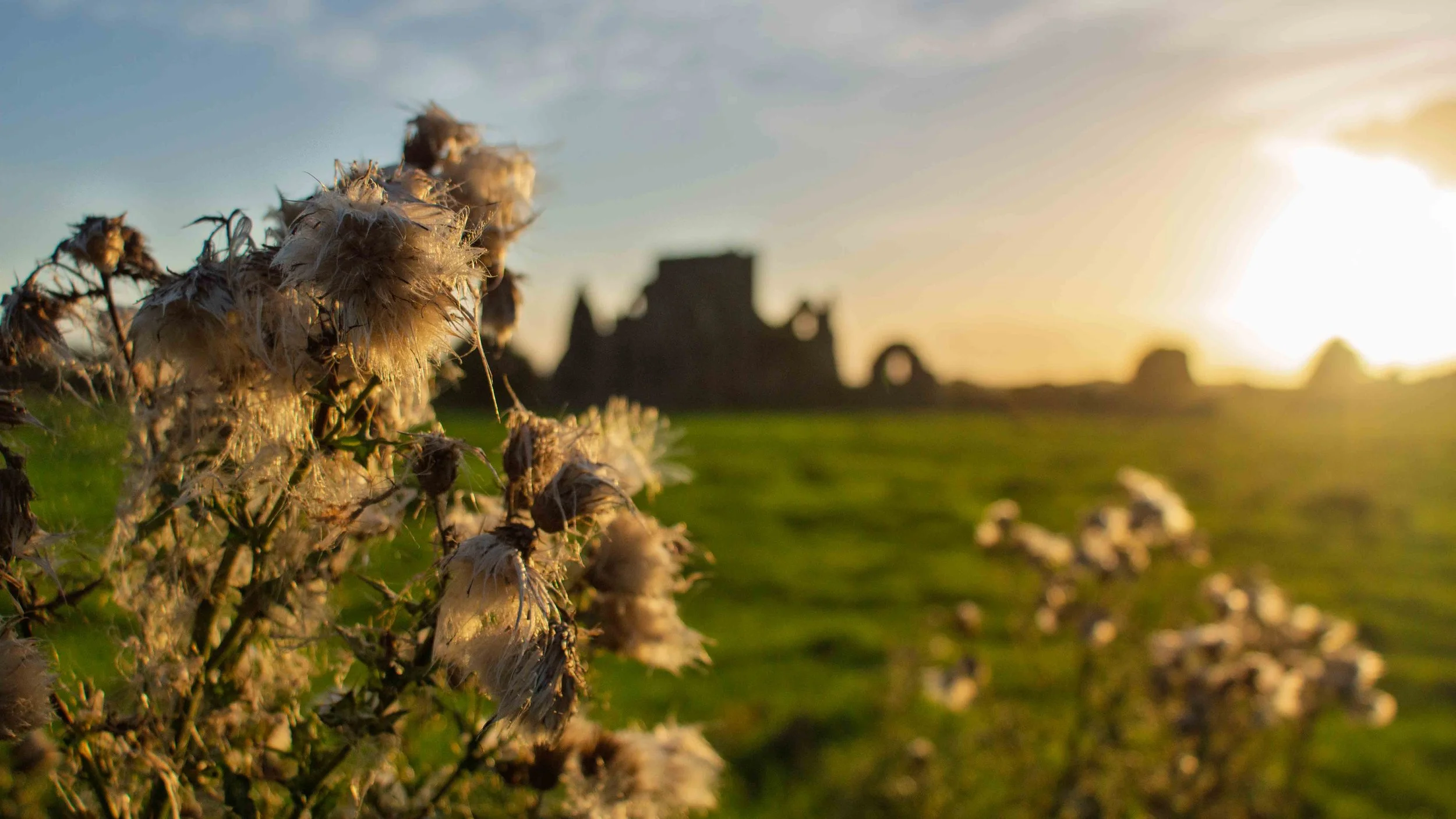Light Is Everything
The Truth About Photography
You can own every lens, every sensor, every editing tool on the market — and still take flat, lifeless photos.
Because the truth is this: photography isn’t about gear. It’s about light.
Light is the raw material of every image. It shapes the mood, defines texture, reveals depth, and gives emotion to a frame. When people talk about “great shots,” what they’re really responding to is great light — whether they realize it or not.
When I stood overlooking Hore Abbey at sunset, I wasn’t thinking about aperture or ISO. I was watching how the last slant of evening light slid across the ruined stone walls — warm gold against the cool green fields. The contrast told the story of time and endurance better than any setting could.
1. Light Creates Shape
Flat light — like midday sun or an overcast gray sky — removes dimension. Everything becomes the same tone.
But side light? That’s where magic happens.
When we were at Hore Abbey we saw the potential. We walked around, took a number of photographs of the surrounding area, the plants, the Rock of Cashel, but we waited. WE KNEW what was coming.
When light grazes across a surface — a wall, a ridge, a person’s face — it carves form out of the flat. Shadows become tools, not problems. You see texture, not just tone.
At Hore Abbey, the low western light caught the worn stone edges and turned decay into definition.
👉 Tip: Watch how light moves across your subject before you even lift the camera. If it doesn’t create shape, wait. Patience always beats settings.
2. Direction Matters More Than Intensity
Photographers obsess over brightness, but the direction of light defines the mood.
Front light makes things look clean and clear — useful, but rarely emotional.
Side light brings out detail and dimension.
Backlight adds atmosphere, creating glow, haze, or rim light that separates subjects from the background.
When the sun dropped behind the Abbey that evening, it backlit the abbey’s stone windows. The light wasn’t “perfect.” It was interesting. That’s a better goal. (Okay, maybe it was a little perfect, too!)
👉 Tip: Turn around. Literally. Some of the best light is happening behind you, not in front.
3. The Color of Light Sets the Mood
Every type of light carries its own emotional tone.
Morning light feels different from evening light, and both feel miles away from that sterile blue of midday.
At sunset, light warms — not just in color temperature but in character. It softens. It becomes forgiving. That warmth can turn a ruin into a memory, or a portrait into something human and timeless.
👉 Tip: Don’t fight the color of light. Let warm light be warm. Let cool light be cool. You can balance it in post, but don’t strip away the emotion it gives.
4. Control What You Can, Embrace What You Can’t
Good photographers learn to see light as it is, not as they wish it were.
You can modify it with reflectors, filters, or post-processing, but the best work happens when you adapt to the light you’re given.
Cloudy days give even tones. Harsh sun gives strong contrast. Golden hour gives intimacy. Each light demands its own kind of storytelling.
At Hore Abbey, I didn’t add or change a thing. The sky and light were already telling the story — old stones holding the last light of the day. My only job was to notice it.
5. Learn to See Light Everywhere
Photography starts long before you press the shutter.
It starts when you walk into a room and notice where shadows fall. When you see how headlights skim fog. When you watch how window light touches a face differently at 7 a.m. than it does at noon.
If you start noticing light — really noticing — your images will improve faster than any upgrade or preset ever could.
👉 Assignment: For one week, leave your camera off. Spend 10 minutes a day just watching light. Where is it soft? Where is it harsh? What color is it? Once you start to see it, you’ll never unsee it.
Final Thought
At its core, photography is less about capturing things and more about translating light.
Every photo you love — every one that stopped you in your tracks — was made by someone who noticed something most people didn’t.
Light is everything. Learn it, chase it, respect it — and your photos will finally start to feel alive.


